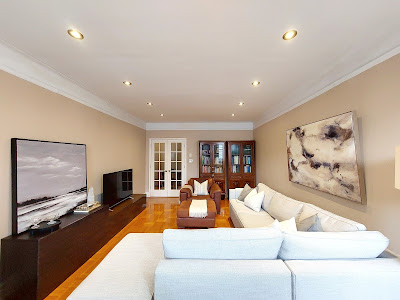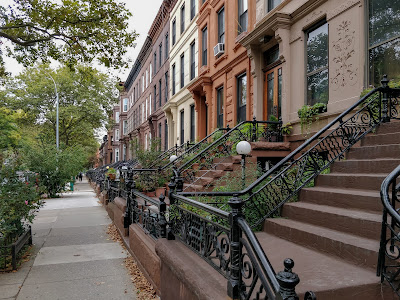The Housing Market
Folk humorist Will Rogers has been quoted as saying, "Buy land - they ain't making any more of it." This allusion to the stability of a market with finite supply and steady demand caught on, with good reason. For decades real estate was the soundest of long-term investments, and owning a home a proven path to financial security. In recent years, however, holding mortgaged real estate is spelling financial doom for many. Confusion abounds as to how a market experts assured the public was rock-solid and dependable, so suddenly and terribly fell apart. The explanation is simple greed and basic principles of economics. Take the famous Rogers quote. True, they are not making more land but they sure are making lots more houses. An almost unprecedented construction boom fueled huge profits for banks and construction companies, and huge expansions for towns with the attendant flow of new taxes into city coffers. A college freshman with a single economics class under their belt could tell the public what is wrong with that picture. When new supply gluts the market, demand must increase for prices to remain stable. Otherwise, when supply out paces demand, prices drop.
"If you build it, they will come," was catchy as a movie quote but makes for a poor business policy. The rampant new construction was an unsustainable strain on the market. At first there were plenty of new customers as the market expanded to bring in untapped categories of consumers. Rising home values gave many homeowners the opportunity to sell and trade up, and encouraged banks to relax lending standards. The housing market was now glutted with both new construction and a new wave of buyers, and a temporary price stability took hold. Most were convinced this would last forever, reams of new houses would be built and hordes of fresh new buyers would materialize for these houses. What such people left out of the equation is that consumers are a finite resource, not an endless one. Each purchase took a consumer out of the buying chain, for at least a while. This necessitated creating more reasons for buying and further easing the lending standards to assure a level of demand which could keep pace with an ever-increasing supply.
The thorny problem of too great a supply was exacerbated by the mass movement toward upgrading the existing supply. Flipping - buying a house only long enough to add value to it, then turn around and sell for profit - became an enormously popular trend. This added a much-needed new customer base but the problems it created were two-fold. First, flipping was a valid business model only when the house's price was increased to give the flipper a profit. Some flippers did nothing more to the house except a new paint job and a good cleaning, and then demanded several thousand dollars in increased price. This encouraged and assisted price inflation. Second, flippers almost always remodeled the house to gain the greatest potential profit. There are now locations where luxury features such as hardwood floors, new kitchen cabinets and granite countertops are standard and common to almost every home. The market was gorging itself on higher priced homes stuffed with luxury features.
What the market lacked were inexpensive houses for blue-collar families. The "starter home" became nearly extinct as these homes were bought, remodeled and marketed instead to single professionals and older, child less couples for greater profit. Houses in the middle price ranges were disappearing as well, as the strain of rising prices began to make itself felt. Flippers weren't alone in the remodeling trend, homeowners got in on the action as well. Many took advantage of lending practices to finance improvements, either to facilitate a quick sale or simply to enjoy for themselves. Even the improvement-minded homeowner with no intentions of selling affected price inflation, however, as the increases in their home's value had a ripple effect on the homes around it. Residential houses were experiencing almost universal price increases Cheap homes became upper middle-class, upper middle-class homes became expensive, and expensive homes became only for the very wealthy.
"If you build it, they will come," was catchy as a movie quote but makes for a poor business policy. The rampant new construction was an unsustainable strain on the market. At first there were plenty of new customers as the market expanded to bring in untapped categories of consumers. Rising home values gave many homeowners the opportunity to sell and trade up, and encouraged banks to relax lending standards. The housing market was now glutted with both new construction and a new wave of buyers, and a temporary price stability took hold. Most were convinced this would last forever, reams of new houses would be built and hordes of fresh new buyers would materialize for these houses. What such people left out of the equation is that consumers are a finite resource, not an endless one. Each purchase took a consumer out of the buying chain, for at least a while. This necessitated creating more reasons for buying and further easing the lending standards to assure a level of demand which could keep pace with an ever-increasing supply.
The thorny problem of too great a supply was exacerbated by the mass movement toward upgrading the existing supply. Flipping - buying a house only long enough to add value to it, then turn around and sell for profit - became an enormously popular trend. This added a much-needed new customer base but the problems it created were two-fold. First, flipping was a valid business model only when the house's price was increased to give the flipper a profit. Some flippers did nothing more to the house except a new paint job and a good cleaning, and then demanded several thousand dollars in increased price. This encouraged and assisted price inflation. Second, flippers almost always remodeled the house to gain the greatest potential profit. There are now locations where luxury features such as hardwood floors, new kitchen cabinets and granite countertops are standard and common to almost every home. The market was gorging itself on higher priced homes stuffed with luxury features.
What the market lacked were inexpensive houses for blue-collar families. The "starter home" became nearly extinct as these homes were bought, remodeled and marketed instead to single professionals and older, child less couples for greater profit. Houses in the middle price ranges were disappearing as well, as the strain of rising prices began to make itself felt. Flippers weren't alone in the remodeling trend, homeowners got in on the action as well. Many took advantage of lending practices to finance improvements, either to facilitate a quick sale or simply to enjoy for themselves. Even the improvement-minded homeowner with no intentions of selling affected price inflation, however, as the increases in their home's value had a ripple effect on the homes around it. Residential houses were experiencing almost universal price increases Cheap homes became upper middle-class, upper middle-class homes became expensive, and expensive homes became only for the very wealthy.


Comments
Post a Comment